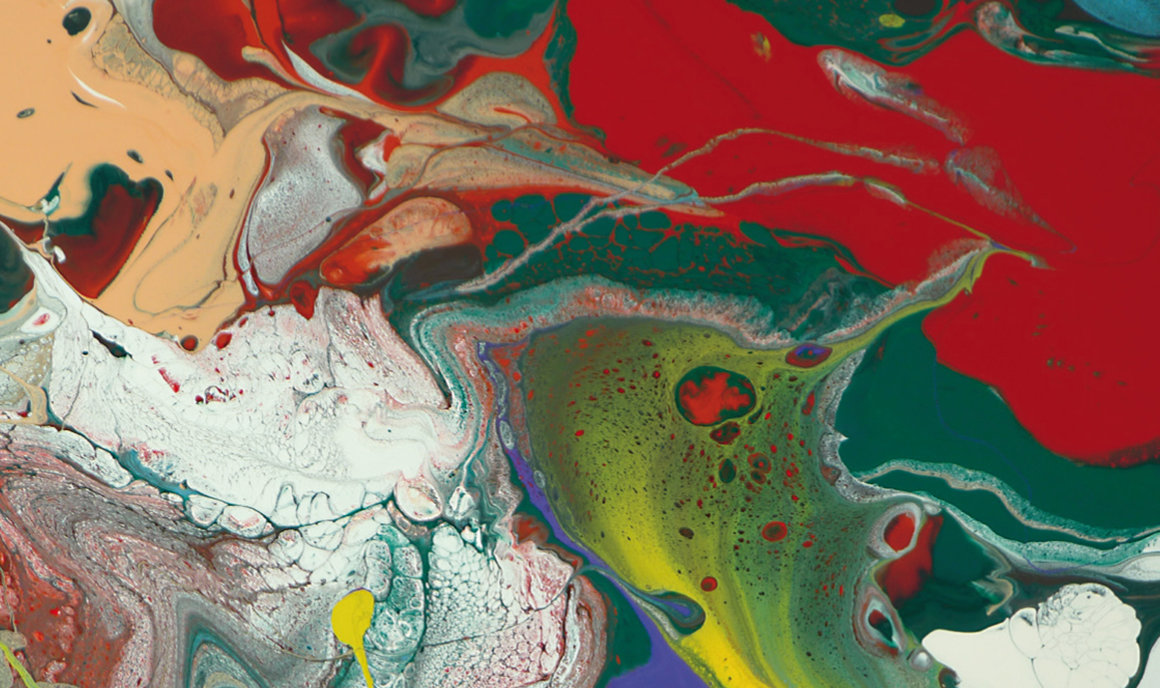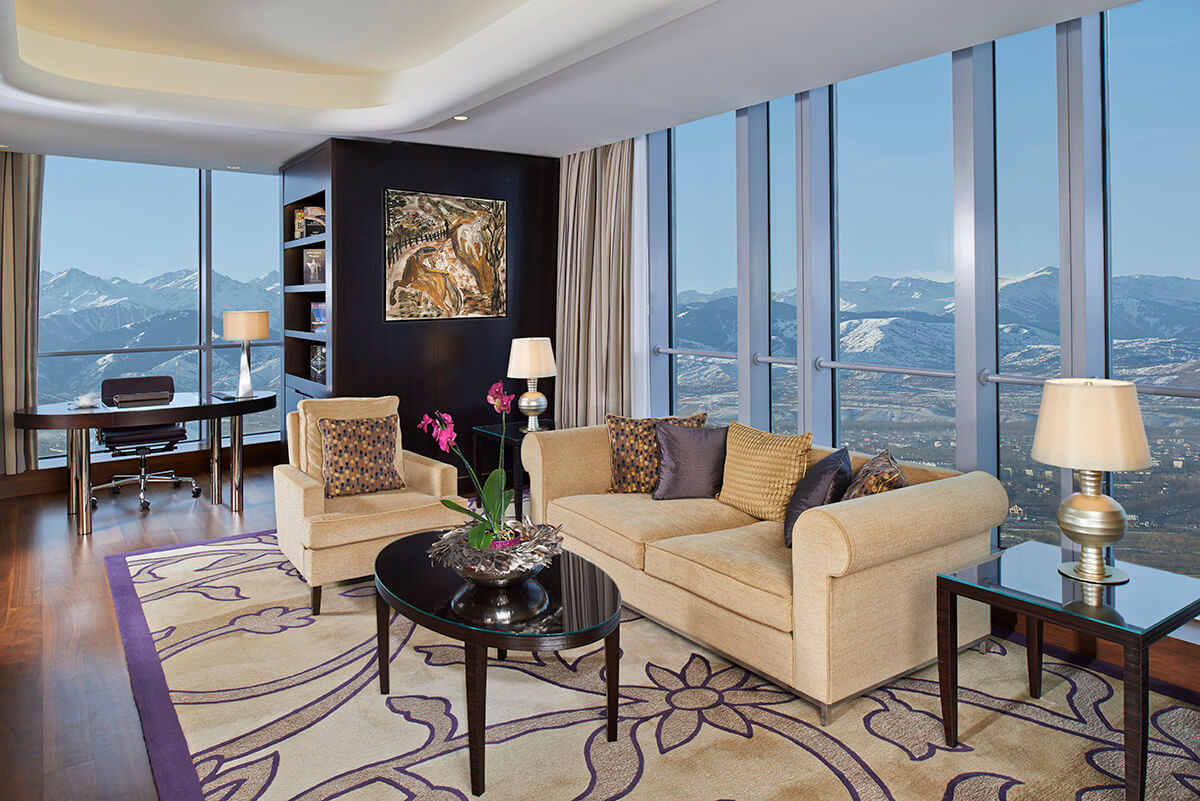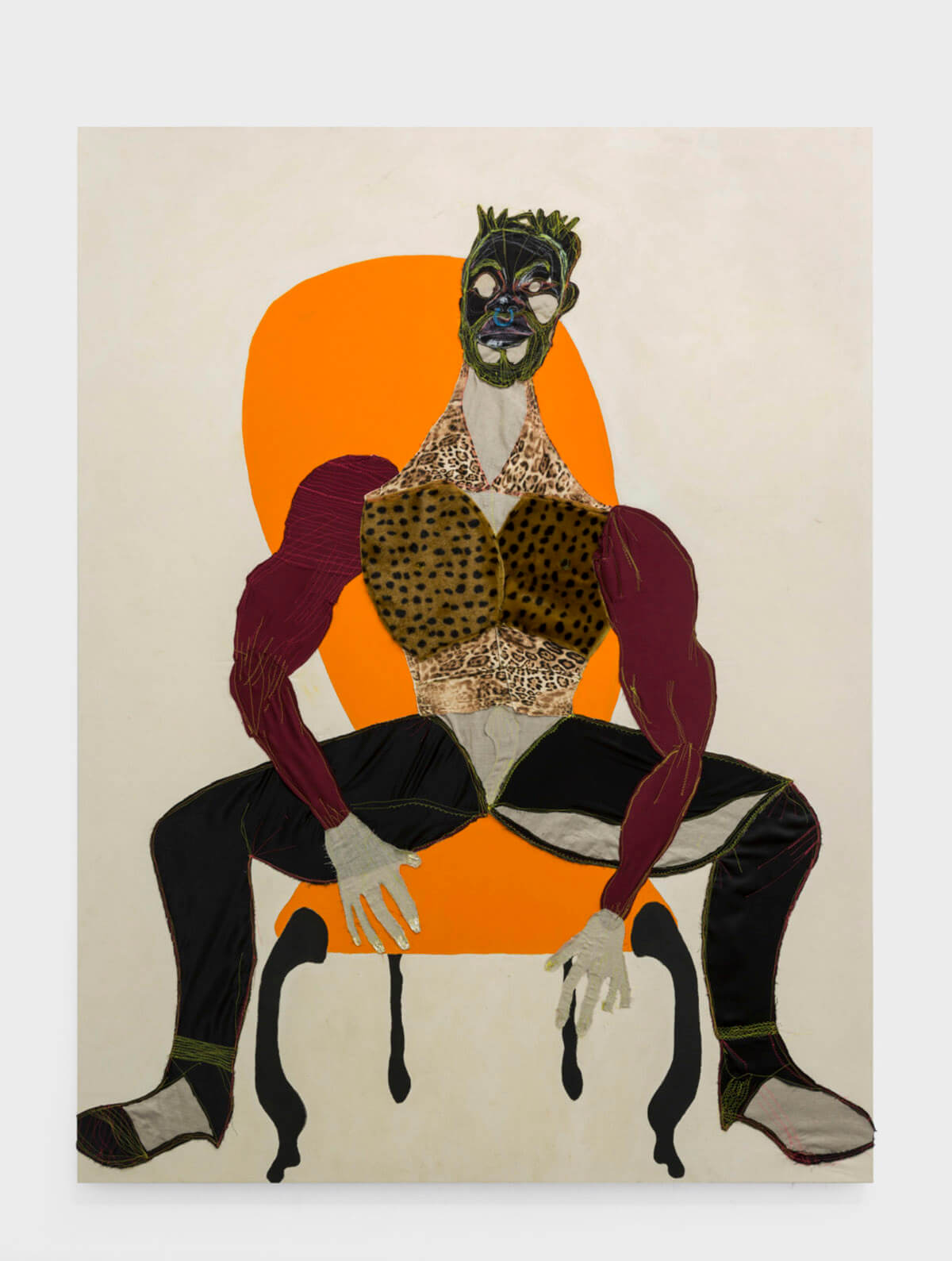
‘Dark Waves’ by teamLab, the Japanese interdisciplinary group that brings art, technology and nature together, at their 2017 Pace London exhibition Transcending Boundaries
Pace Gallery, under the leadership of owner Marc Glimcher, is one of the leading forces on the global contemporary art scene. With his visionary plans for spectacular multi-media shows, he is taking art into the future. But he is also stepping in to curate art in public areas in parts of America where local government funds are low, a role where the private sector’s responsibility will only expand, he tells Darius Sanai in an exclusive interview
LUX: With current developments in public art, it is felt that private initiatives and galleries, such as yours, are taking on the role of public services.
Marc Glimcher: Absolutely. There is a level of ambition that people have and this is true I think in all sectors. For example, when comparing the art and tech world: academic ambitions have grown so large that they have become private, corporate ambitions. That is quite a well-documented thing now. We see Silicon Valley companies and so forth taking on this role of being consumers of social good as well as entrepreneurs.
Follow LUX on Instagram: the.official.lux.magazine
In the art world I think we are seeing the same thing where developers see that a public mission has melded with their commercial vision and purpose. And without that public good the commercial success is not enough, it’s not guaranteed and it’s not balanced, so we find ourselves taking on that role.

Marc Glimcher (right) with the artist Kevin Francis Gray at the opening of his show at Pace New York in 2017
LUX: Is there a danger that these become one man or one group’s vision of what public art should be? And is that good or bad?
MG: Well, it always has been. This isn’t purely true but great individual visions have guided great cultural achievements. Committees are not famous for having inspired or patronised or enabled great cultural moments to happen. It is something done with passion by someone who kind of parallels the artists. When a municipal committee get together to decide what the art is going to be on some public site, you don’t get the best result. When someone in that group has a real vision, pushing it as if it were their private vision, that is when amazing things happen. I don’t think there is any history of somebody’s private vision hurting the quality of cultural intervention.
LUX: Can you tell us more about your initiatives. What’s forthcoming, how will it work and how will communities be involved?
MG: It’s very complex. The gallery system was set up to represent an artist and the artist makes their work and the gallery shows it and sells it. The process for these public commissions is much more akin to an architectural process. What do we have coming up? We’ve got 10 projects around the world right now where we are making proposals, the first one being ‘The Illuminated River’. And we have projects in New York and Massachusetts, Australia, London, and China where there are new cities being built every day. I will say that London seems to be at the centre; it’s a fertile place to have those conservations about this idea. That’s where we found Mark Davy, founder of Futurecity, who we are in collaboration with for Future\Pace. We’ve set up a group who can function using the economic model of the architectural world to address an arts project; it’s a very different approach. We are going out to developers and municipals. We are helping to draft a cultural agenda and will be working with our artists and others who are not necessarily gallery artists but who work on a public scale and acting as the planning group to get this job done.

‘Impermanent Life’ by teamLab in Transcending Boundaries at Pace Gallery
LUX: And is this driven by your desire that more people should be able to see and experience art?
MG: Yes. Our natural driver is the artist and we see among the artists a desire to bring the message out into the world. We take our cue from them so it’s a natural evolution for us to feel excited when we get a chance to have Leo Villareal light all the bridges crossing the River Thames. It’s the same with artist estates. We recently took on the estate of the American sculptor Tony Smith. He is one of the greatest artists of the 20th century and one of the most important sculptors aware of public engagement and their experience of space. My father drilled it into my head that this is our family’s contribution to help these artists get their message out and extend human perception. When we got 200,000 people to our teamLab exhibition in Menlo Park, California, it was pretty thrilling.
LUX: What’s it like to take over your father’s business. Is it just a job or something else?
MG: It’s a unique challenge. You have to survive the first 20 years without killing your father and struggling with self-definition. People may deny it but every second-generation person with any kind of ambition has to come to peace with the fact their father created something from scratch, and you’re never going to be that person. So who are you going to be? And what are you going to do? You know you’ve made it when you won’t let your father leave instead of trying to kick him out.
LUX: And I guess your relationships with artists are at the heart of what you do and how you define your relationship with the business?
MG: Absolutely. That’s what we experienced growing up, being surrounded by the artists. It’s a very complex business. There are many different agencies involved – there are the museums, the collectors and the writers. You need to remember what your core is in a complex business and ours is the representation of the artists. If you maintain that there is a way to cross from one generation to the next and to create a real institution.
LUX: What thrills you, what makes you come alive?
MG: For me it’s walking into the artist’s studio and seeing their breakthrough, that spectacular invention that they have created, and knowing you can transmit that out into the world. I will get a call from Tara Donovan, who will have been struggling on a new body of work for a year, and she will say “I’ve got it”. And you can hear in her voice that something has happened. Some transformation took place. And as an art dealer you get in the car and you’re the second person to connect to that creative moment. Or you can get on a plane because Adrian Ghenie called and you arrive in Berlin, go into his really dirty, really dark studio, go around the corner and there is this work that has just been dredged out of the great history of painting. Then everything you do is about bringing it out of the gallery and into the world, to the museums, to the lectures and so on. If that makes you come alive then you are an art dealer.
Read next: Moroccan artist Ghizlan El Glaoui’s unique visions of beauty
LUX: You studied sciences. Does that bring you a different perspective to others in your business?
MG: It might. I definitely think that it has worked well for me. The art gallery is very concerned with historical process, not just the individual process of one individual artist. The rigorous training and analysis that one gets in immunology or biochemistry translates well into trying to understand how the broad sweep of culture works and how artists work.

A London showing of works by Italian artist Mario Merz, organised by Pace Gallery in collaboration with the late artist’s foundation
LUX: And in terms of artists, there must be more competition than ever to find and represent the best artists? Or is that irrelevant because more people are becoming artists?
MG: No. It is very relevant. There is more competition and it is shaping the art world. The galleries are growing. In a market place when the demand is going up at the same time as the competition, you tend to create more consolidated, larger companies to deal with all the various competitive issues. It becomes very expensive to be an art gallery so it’s harder for mid-level galleries. Although, the population of artists is so diverse that there are still artists for every kind of gallery. It’s hard to imagine big galleries replacing the smaller galleries because small galleries are absolutely essential for emerging artists. And there are a lot of artists who don’t want anything to do with the big galleries. In 1975, when you had an artist popular in New York City it meant that if you wanted to keep working with them you had to do a full colour catalogue instead of black and white. Now that same artist, or a comparable artist, is popular in New York, Korea, Europe, China, South America and there are multiple museums competing for shows. There are awards and biannuals and art fairs. It requires an enormous amount. Contrary to popular belief, it’s not about flying artists around in private jets and having expensive parties. It’s about funding the production of work, shipping it all over the world, organising exhibitions, lectures and symposiums and about supporting the museums who have commissioned your artist. We have 17 registrars in charge of handling and moving the art and making sure it gets where it’s supposed to be in perfect condition. That is twice the size of our PR staff, which is big, too.
LUX: Would collectors of these popular artists in 1970s New York have been in the artistic, cultural, media community themselves? And how has that demographic changed since then?
MG: No, that’s a myth. Art patrons haven’t been other artists or writers, although they have always collected artists when they were starting out because they were the ones who knew about them but they always get priced out. In the 70s the collectors were the real estate developers because they were the most entrepreneurial, upwardly mobile group of wealthy people in America, Japan and around the world. They were priced out by an emerging financial class of hedge-fund people who were collecting more aggressively, and they in turn might be displaced by technology people.

teamLab’s digital work ‘Impermanent Life’ (2017) visualises the cycle of life constantly changing
LUX: How do you view the debate about the fragmentation of art, that there are no movements in art and no significant artists anymore?
MG: I view it as something that people always say about their time. People are very sceptical, very hard on their own moment in history. We’ve never heard anyone say now is a golden age of great art. Golden ages are always in the past. In the day when those southern California light and space artists were coming out, believe me, people said, “Oh god, this is so desperate, nobody knows how to make great art, they’ve forgotten”. Now we have special effects and digital artists. Great art is always made, it just takes a while to be recognised as such.
Read next: Olympic high jumper and Richard Mille’s newest partner Mutaz Essa Barshim on the importance of timing
LUX: What are the most interesting things going on at the moment at Pace?
MG: We have our art and technology and public art strategy that we have been working on for the last five years and it’s all bearing fruit at this point. More importantly than that, it seems like it is playing a significant role in the global cultural dialogue. That’s always the place we want to be – making significant dialogues. Both art and technology and the way that those groups making art in this way have a certain capacity to work in public spaces. But the nature of the art making also creates natural limits to what the artists can do. There were 20 requests for sky spaces from James Turrell for every one that could be done. New cities get built around the world with new large-scale developments and these groups want to engage in art, they don’t want to engage just with design. So it’s a call to the artists to find a way to work on a bigger scale. It’s driving the creation of art collectives along with the fact that this is a very collaborative age. We are seeing amazing possibilities arise.
LUX: Which artists are really exciting you now?
MG: We are very excited about Tony Smith because people haven’t recognised his greatness. There is a lot of great painting that is being done right now by the likes of Adrian Ghenie and Nigel Cooke. Tara Donovan, who is kind of a post-minimalist artist, her show sold out in a day! We are about to have a Robert Mangold show and Bob, who is 77, hasn’t had a show in five years. Recently we’ve had Richard Pousette-Dart, Kenneth Noland and Louise Nevelson, great artists from the 60s and 70s who are now being rediscovered. We are excited about a lot of different things.
LUX: Do you think art has replaced literature and music as the primary mode of cultural information?
MG: I wouldn’t count out music or literature. The most ancient art form is music; it pre-dates language. Historically, I think visual art sits somewhere between music and literature but it’s having its moment right now. We are in a visual society.
pacegallery.com










































Recent Comments